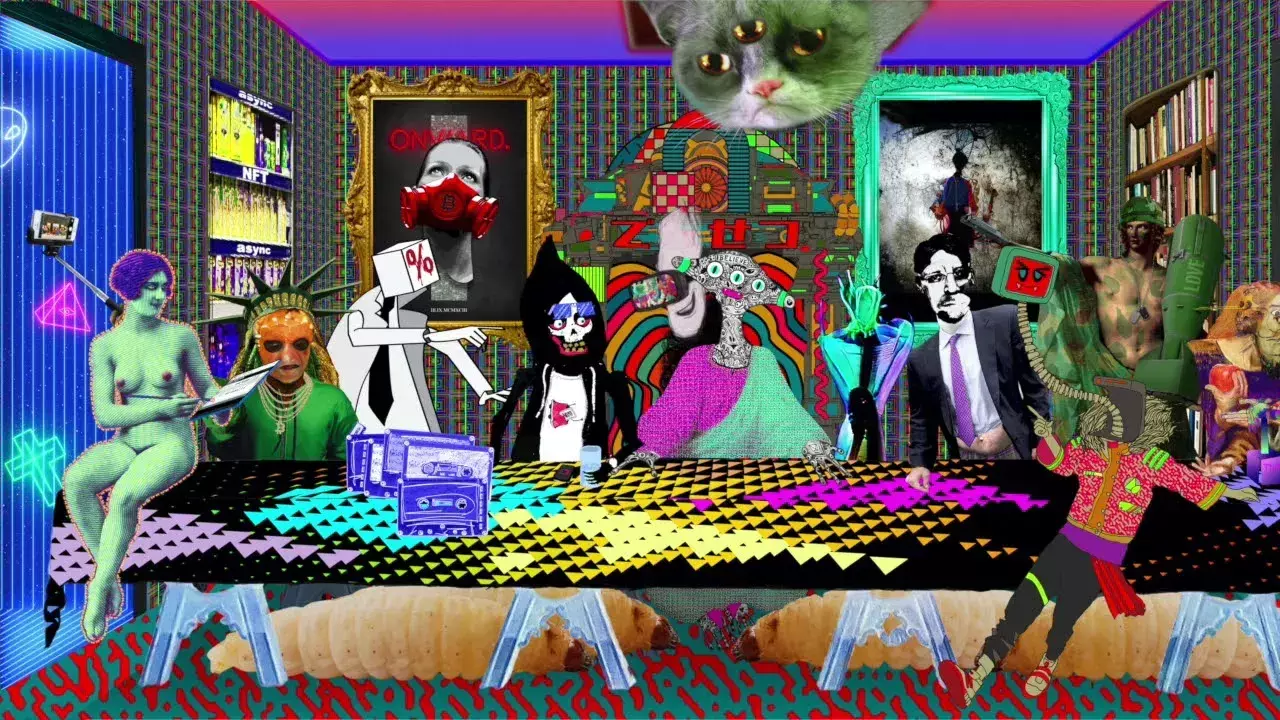An intricate prospect
Non-Fungible Tokens are redefining art ownership, but lack of regulation and environmentally hostile nature of blockchain technology present ample challenges to its growth

The art NFT market has experienced significant growth in recent years, with a global sales of USD 11.1 billion in 2021. Despite a decline in 2022, the market still surpasses pre-pandemic levels and is predicted to reach USD 13.6 billion by 2027. The number of art NFT sales peaked in August 2021 with over 117,400 NFTs sold on major blockchains like Ethereum, Ronin, and Flow. However, by April 2023, the monthly sales figure had shrunk to around 7,700, reflecting the market correction. The average price of an art NFT also saw a significant drop from USD 8,862 in September 2021 to USD 1,385 in April 2023. Top-selling projects include Beeple's "Everydays: The First 5000 Days," CryptoPunks, Bored Ape Yacht Club, and Art Blocks. Established artists like Damien Hirst and Takashi Murakami have also entered the NFT space, collaborating with digital artists and platforms to create unique and valuable artwork. The art NFT market faces challenges such as market volatility, concerns about quality and authenticity, and the environmental impact of blockchain technology.
What is NFT?
NFT is an acronym that stands for Non-Fungible Token. Consider it as an exclusive digital credential linked to a digital entity, such as an artwork, music composition, or even a social media post. This certificate serves as a proof of ownership and distinguishes the item as unique, regardless of the possibility of the asset being duplicated or shared.
NFT landscape in India
The Indian NFT market is experiencing rapid growth, with high-profile artists, musicians, and celebrities creating and selling their own NFTs. Major Indian companies like Tata Motors and Mahindra are also exploring their potential for branding and customer engagement. However, the lack of clear regulations surrounding NFTs creates uncertainty for creators and investors. Access to cryptocurrency wallets and platforms needed for buying and selling NFTs is still limited in many parts of India.
Current applications include digital artwork marketplaces like WazirX NFT and Polygon Mumbaikars, music NFTs, ticketing, gaming, and real estate applications. With a large and tech-savvy population, India has the potential to become a major player in the global NFT market. Increased awareness, improved infrastructure, and clear regulations can pave the way for wider adoption and innovative use cases.
NFTs in India have the potential to empower creators, generate new revenue, and promote financial inclusion. However, challenges include lack of clear regulations, limited infrastructure, speculation and volatility, quality control concerns, environmental concerns, intellectual property issues, and tax implications. The initial NFT boom was fueled by speculation and FOMO (Fear of Missing Out), leading to inflated prices and potential bubbles. The ease of creating NFTs has also raised concerns about low-quality artwork, plagiarism, and scams. The undefined taxation of NFTs and cryptocurrency earnings in India further complicates the adoption and growth of NFTs.
The NFT art market experienced a significant surge in 2021, followed by a steep decline in 2022. The initial boom was fueled by speculation and excitement, leading to overvalued NFTs and frustrated investors. The ease of NFT creation led to a glut of artwork, making it harder for genuine talent to stand out. Environmental concerns were raised due to the energy-intensive nature of the blockchain technology used for minting NFTs.
Potential futures include shifting focus from speculative trading to genuine collector communities built around artists and their work. Platforms and marketplaces may implement stricter curation, attracting collectors and investors seeking long-term value. NFTs could find new applications beyond simple ownership, such as fractional ownership, access to exclusive content, or voting rights in artistic communities. Technological advancements in blockchain technology could address environmental concerns and widen adoption.
Despite the uncertainty, the future of NFTs in art is uncertain but not necessarily bleak. The technology holds potential for innovative applications and empowering artists, but overcoming challenges of speculation, quality control, and environmental concerns is crucial.
Darkside of NFT
NFTs, like any emerging technology, are vulnerable to various criminal activities. These include theft and scams, money laundering, market manipulation, intellectual property infringement, digital forgery, environmental crime, and tax evasion. The lack of transparency and regulation in the NFT market makes it attractive for criminals to buy and sell NFTs with illegally obtained crypto. Market manipulation can harm investors and erode trust in the NFT ecosystem. Intellectual property infringement can occur through plagiarism and counterfeiting of artists' work. Environmental crime can arise from the energy-intensive nature of some blockchain technologies used for minting NFTs. Tax evasion can occur due to the ambiguous legal status of NFTs in many countries.
To stay safe in the NFT space, it is essential to do your research, buy NFTs from reputable platforms and artists, store your NFTs securely, be wary of scams, and seek professional advice on the legal and tax implications of buying and selling NFTs. By following these guidelines, you can minimise risks associated with NFT involvement and contribute to a safer and more sustainable development of this emerging technology.
The writer is Assistant Director, Telangana State. Views expressed are personal




